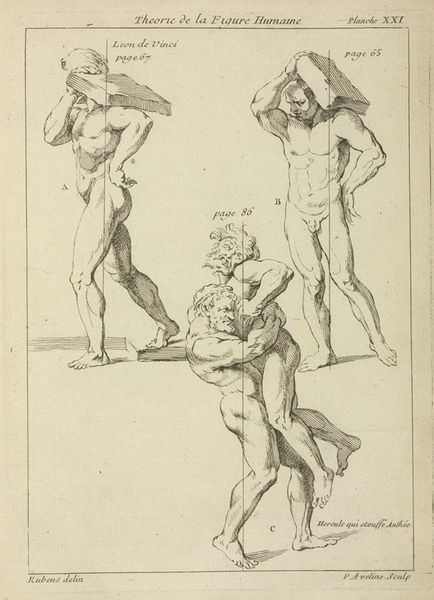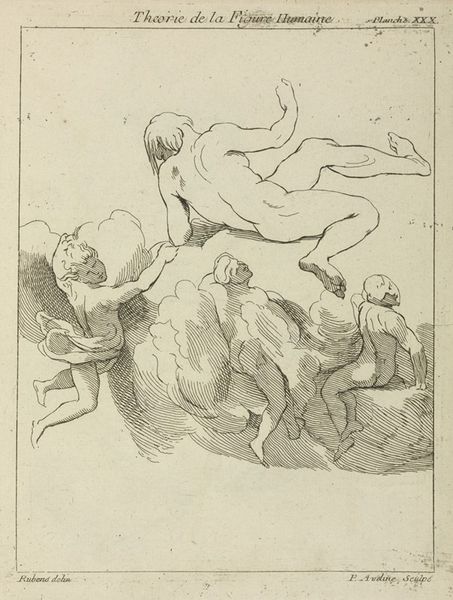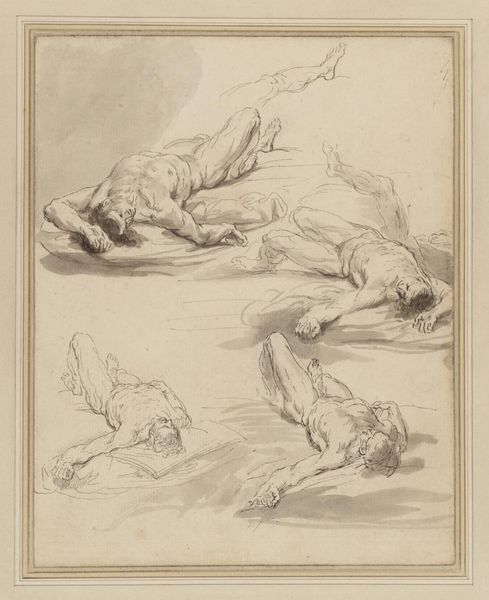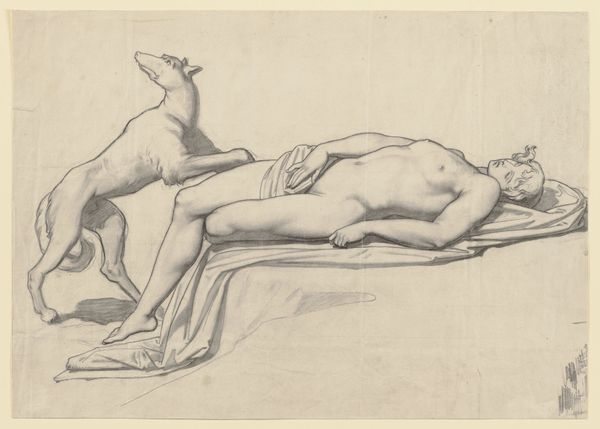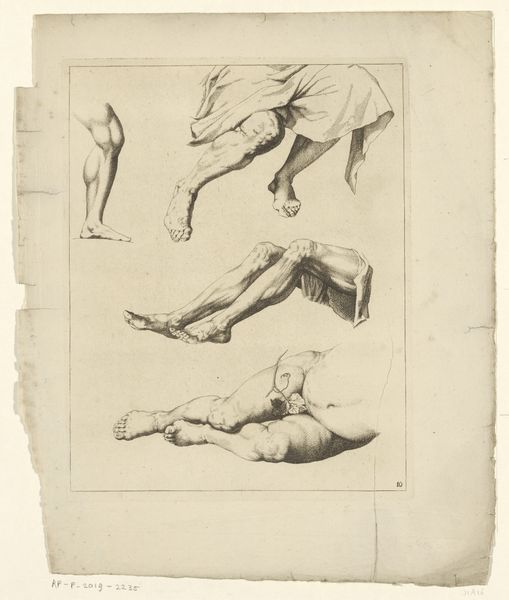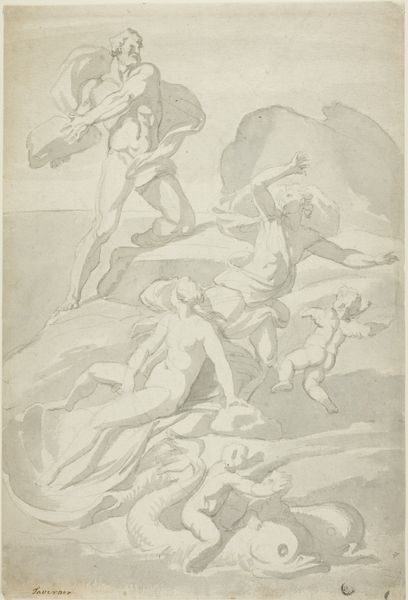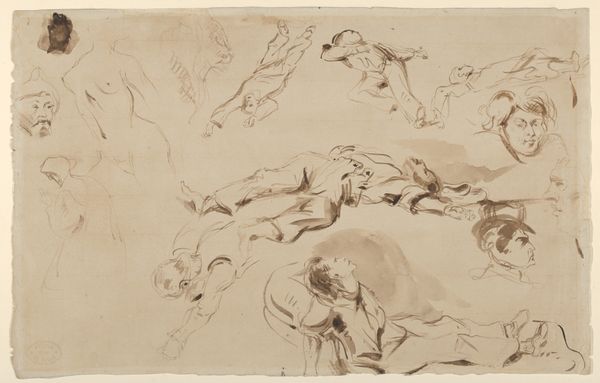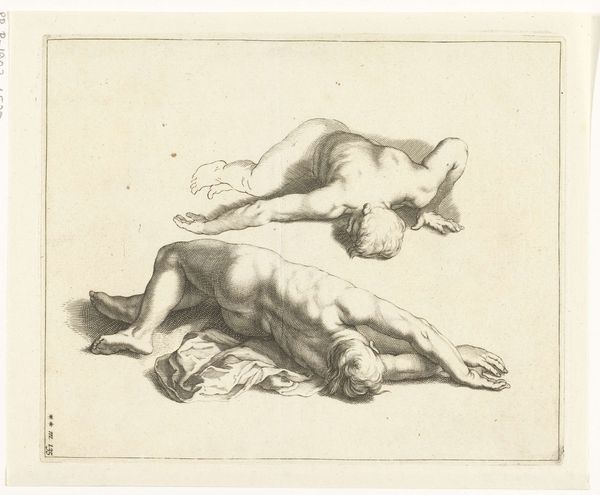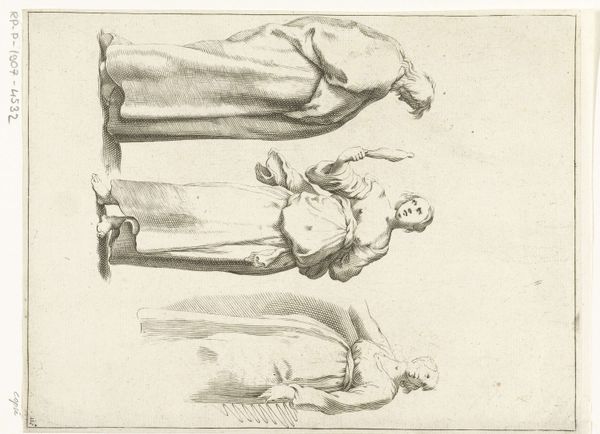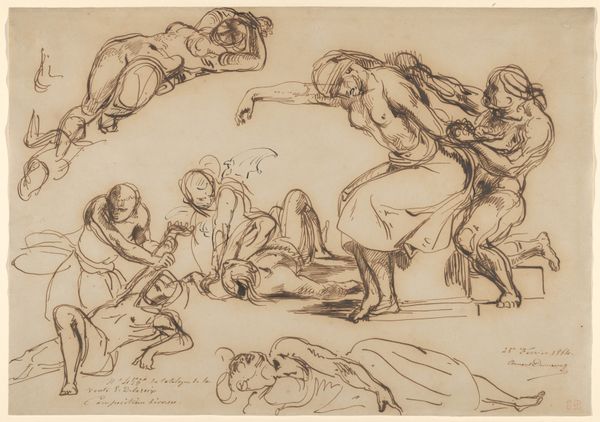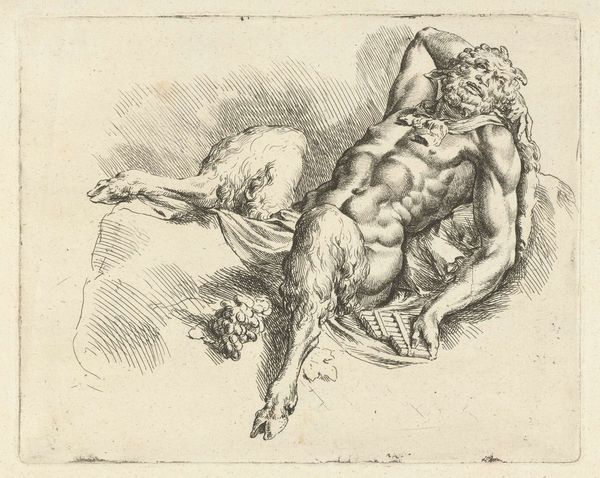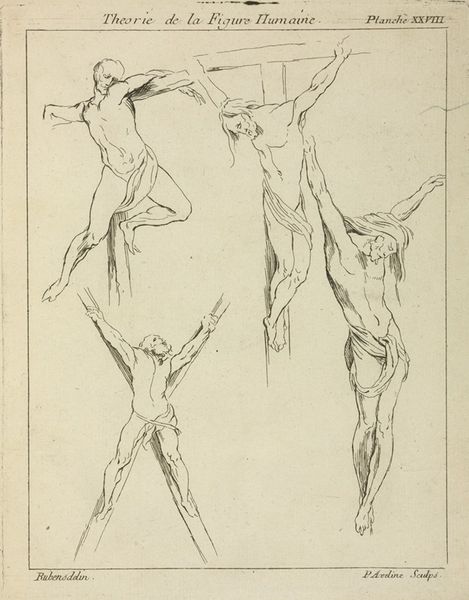
drawing, paper, ink
#
portrait
#
drawing
#
comic strip sketch
#
baroque
#
pen sketch
#
figuration
#
paper
#
personal sketchbook
#
ink
#
sketchwork
#
ink drawing experimentation
#
pen-ink sketch
#
pen work
#
sketchbook drawing
#
history-painting
#
storyboard and sketchbook work
#
academic-art
#
sketchbook art
Copyright: Public Domain: Artvee
Curator: This ink and pen drawing on paper, attributed to Peter Paul Rubens, is titled "Several figures in prone and supine positions." What strikes you most about it initially? Editor: The repetition is striking; almost hypnotic. The sheer number of figures, all reclining in varying states of repose—or perhaps defeat—creates a tableau that's simultaneously languid and unsettling. The tight arrangement suggests a deeper exploration of form. Curator: Precisely. The reclining figure, of course, has a long history as a symbol of classical beauty, sleep, or death. I find these poses speak to mortality and perhaps vulnerability. Think about historical depictions of battlefields littered with fallen soldiers. Editor: Interesting you point out battlefield depictions, because while individually rendered with detail, en masse there’s an anonymity and homogeneity among them. I almost wonder, could this serve as an early conceptual step in Rubens' visualization for large narrative paintings? The economy of line, while elegant, keeps it from high definition. It suggests preliminary ideas, a study of masses. Curator: A valid point! Given the time, these figures may embody classical allusions or reference broader cultural narratives surrounding human triumph and suffering, while the sketch format opens an intimacy with the master. The individual, marked with 'x' like cadavers, become signifiers— universal. Editor: It makes me want to trace those delicate lines, explore the balance between light and shadow that the medium of ink allows, with its contrasts heightening the sculptural aspect of the human form. But the recurring mark does seem to suggest mortality and questions ideas about monumentality. Curator: And the use of ink – simple, direct. Its starkness contrasts the fleshy, often sensual renderings within Rubens' painted work. The marks make me think of an almost desperate shorthand, documenting the frailty that links us all, even heroes and gods. Editor: Well, from an academic viewpoint, the starkness forces one to confront the elemental geometry beneath the curves and contours; almost like a prototype anatomy class, distilled for essential structure and arrangement on the page. A kind of preparatory, archetypal collection of data on reclining, suffering bodies? Curator: I suppose this piece then encapsulates themes of humanity, mortality, even memory, rendered in the swift, unforgiving hand of a master. Thank you for unveiling the compositional nuances present within. Editor: It's fascinating to examine such a distilled perspective on familiar tropes of Baroque drama, seeing how basic forms prefigure more elaborate artistic output.
Comments
No comments
Be the first to comment and join the conversation on the ultimate creative platform.
